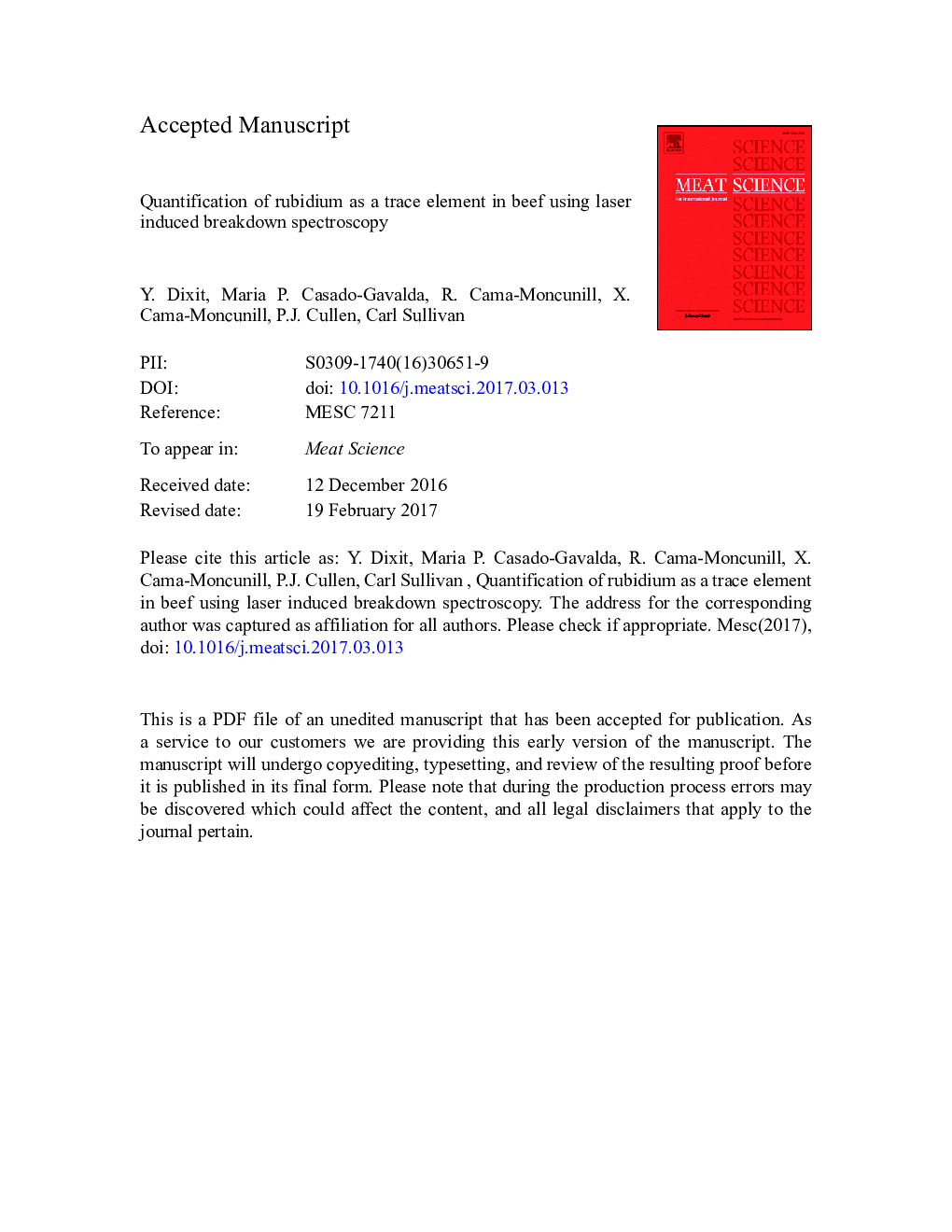| Article ID | Journal | Published Year | Pages | File Type |
|---|---|---|---|---|
| 5543388 | Meat Science | 2017 | 15 Pages |
Abstract
This study evaluates the potential of laser induced breakdown spectroscopy (LIBS) coupled with chemometrics to develop a quantification model for rubidium (Rb) in minced beef. A LIBSCAN 150 system was used to collect LIBS spectra of minced beef samples. Beef liver was used to spike the Rb levels in minced beef. All samples were dried, powdered and pelleted using a hydraulic press. Measurements were conducted by scanning 100 different locations with an automated XYZ sample chamber. Partial least squares regression (PLSR) was used to develop the calibration model, yielding a calibration coefficient of determination (Rc2) of 0.99 and a root mean square error of calibration (RMSEC) of 0.05Â ppm. The model also showed good results with leave-one-out cross validation, yielding a cross-validation coefficient of determination (Rcv2) of 0.90 and a root mean square error of cross-validation (RMSECV) of 0.22Â ppm. The current study shows the potential of LIBS as a rapid analysis tool for the meat processing industry.
Related Topics
Life Sciences
Agricultural and Biological Sciences
Food Science
Authors
Y. Dixit, Maria P. Casado-Gavalda, R. Cama-Moncunill, Maria Markiewicz-Keszycka, X. Cama-Moncunill, P.J. Cullen, Carl Sullivan,
